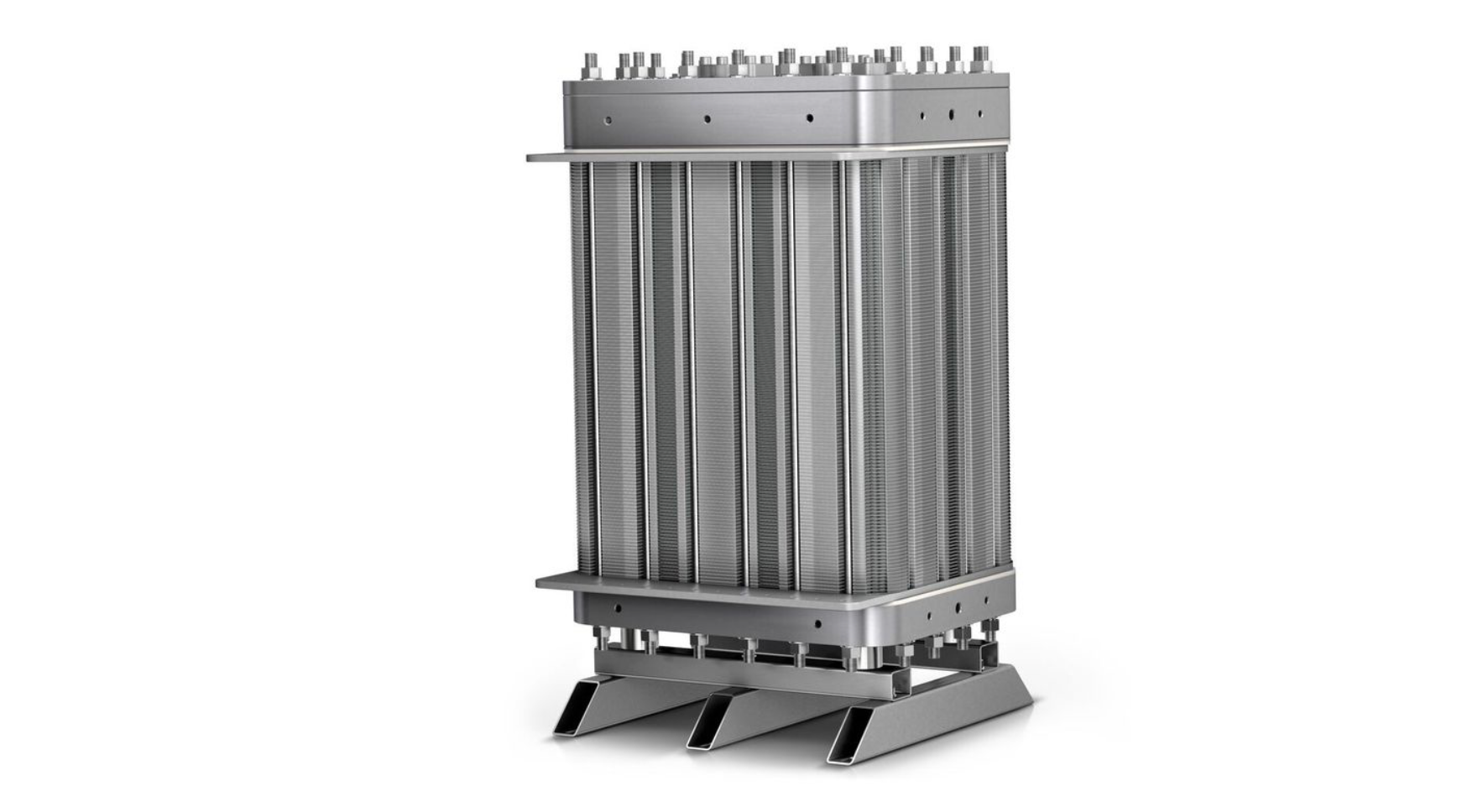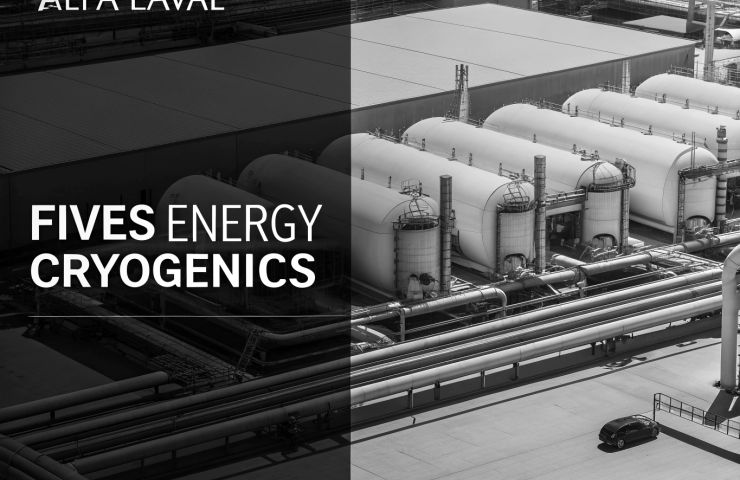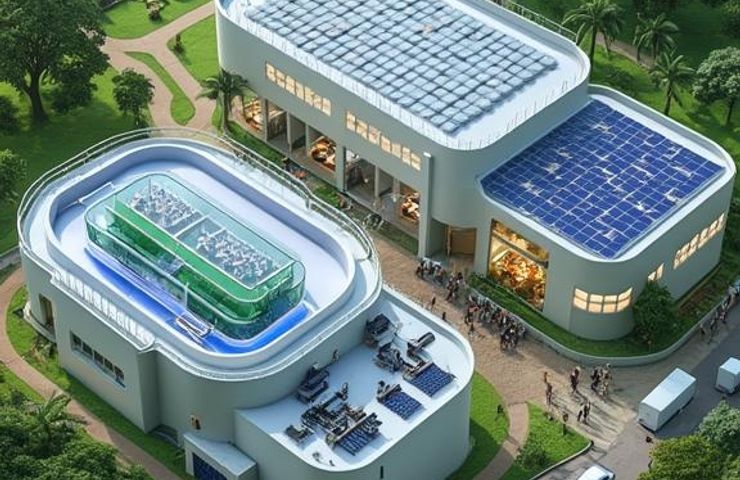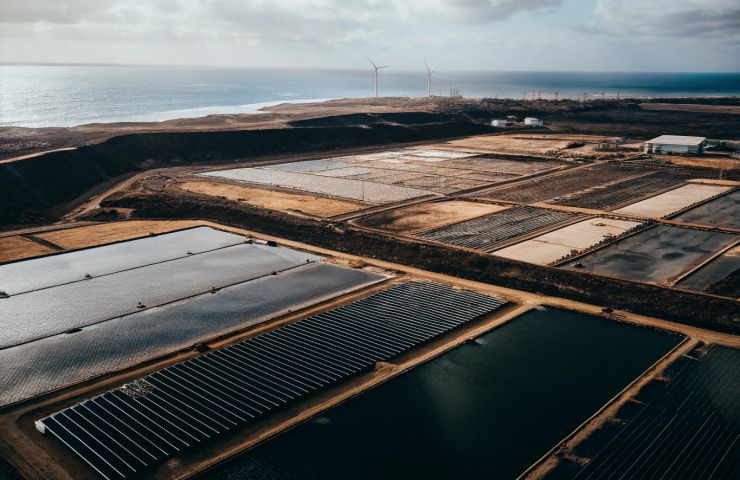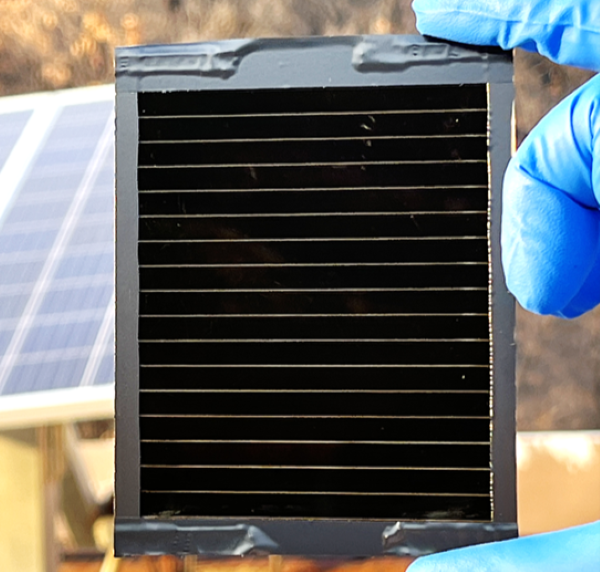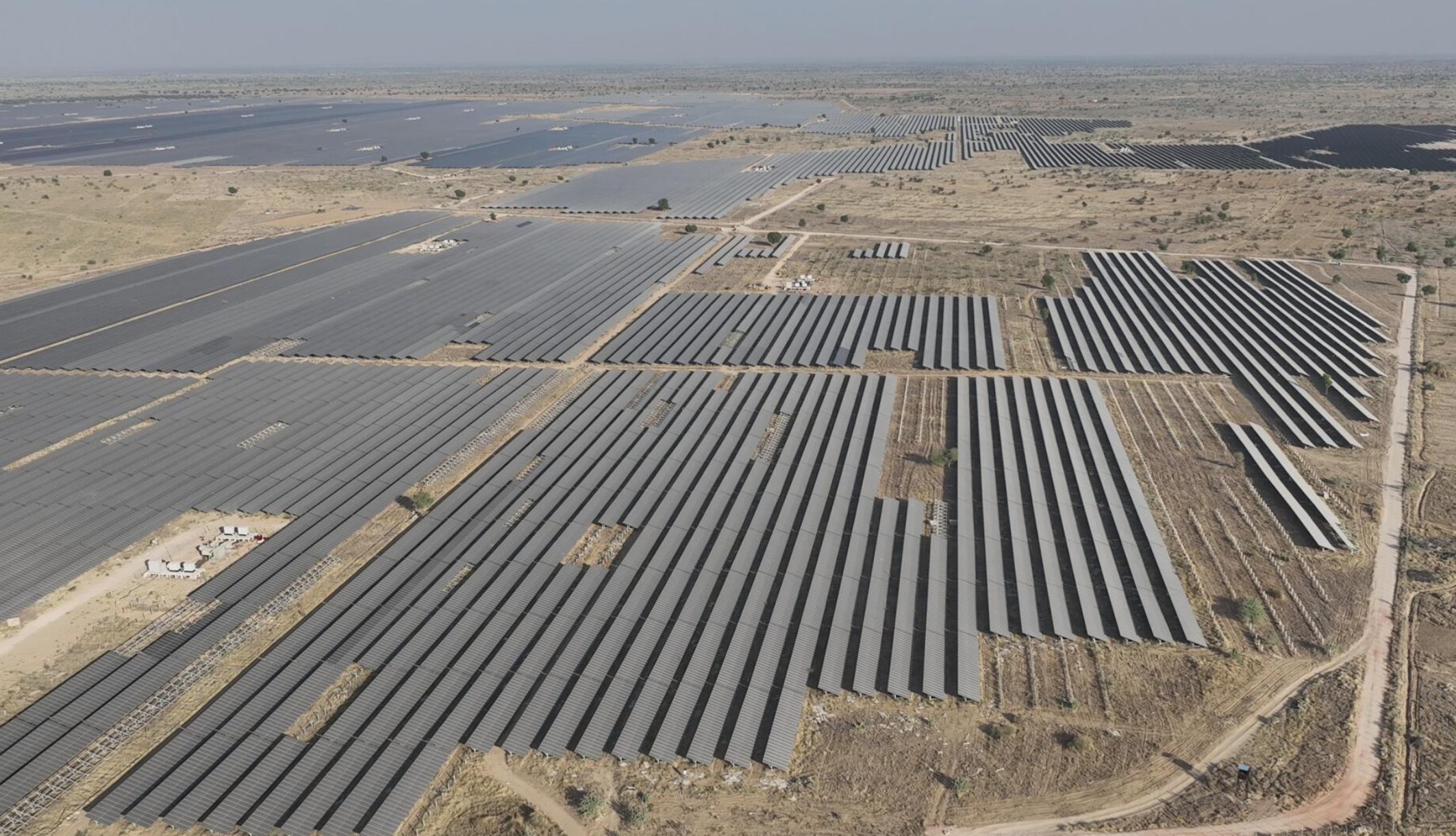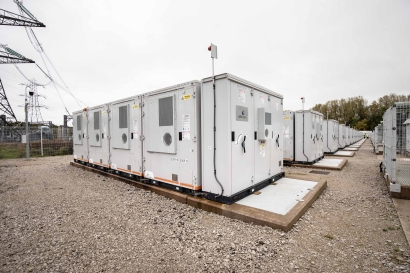What standards for agrivoltaics?
The technology which combines solar PV panels and agriculture is gaining ground. IEC Standards for solar photovoltaic (PV) systems already exist, but more might be required, dealing with some of the more specific issues relating to agriculture.

The technology which combines solar PV panels and agriculture is gaining ground. IEC Standards for solar photovoltaic (PV) systems already exist, but more might be required, dealing with some of the more specific issues relating to agriculture.
Agrivoltaics is a growing sector, led by China, and it is one way that high levels of sustainable energy can be generated without taking valuable land for food production away.
Agrivoltaics works best either for specialty crops, such as blueberries, or for arable agriculture, which involves large-scale farming. Matthew Berwind, a team leader focusing on PV system simulation in large-scale solar power plants at the Fraunhofer Institute for Solar Energy Systems ISE in Germany, comments on specialty crops: “These types of crops need a lot of weather protection. In traditional agriculture, they are often situated in a large plastic tunnel, or, if we're talking about outdoor berry cultivation, some hail or weather-protective nets made of plastic. So why not replace these sources of plastic with solar panels that can provide the same or very similar weather protection?” He adds: “We're looking at max one to two hectares for an apple orchard, and maybe you can fit a megawatt of solar power on top of that.”
Sensors can help, and standards too
Agrivoltaics have even wider potential on larger land wheat or grass agriculture for animal fodder. “The usage of large swaths of land for the production of animal fodder is an agricultural use case that seems to be quite well suited for agrivoltaics because grass in general is quite shade tolerant. So building some vertical fence-like structures that allow higher performance per installed kilowatt seems quite attractive,” he says.
A single-axis solar tracker allows the movement of the PV panels in one direction, from east to west, following the sun's path from sunrise to sunset. Berwind explains: “A single-axis tracker is a standard technology in many places of the world, especially areas with high irradiation. In areas with low light, they're less prevalent.”
He goes on: “When you find these combinations that work quite well, where both sides of the bargain – photosynthesis and photovoltaics – both work together, that's a big value proposition that everybody wants to jump on. Across Europe right now, large commercial installations – 50 MW utility-scale systems – are popping up all over the place. I see that as the most rapidly expanding area.”
While sensors are not necessarily required to run these agrivoltaic systems, they can help, particularly when farmers wish to maximize their high-value specialty crops. Berwind says photosynthetically active radiation sensors can be extremely useful when used on large-scale projects. “You need to know that the trees are blooming, you need to know how much light is available, you need some photosynthetically active radiation sensors, and you need to have the ability to control these PV trackers, which involves a big control system and data analytics.”
IEC TC 47 publishes key standards for the design, use and reuse of sensors, enabling users to measure their performance. For example, it specifies power interface requirements for automotive sensors in IEC 62969-1. Whether this standard can be applied to agricultural tractors remains to be seen. As part of the broad range of electronics it covers, the IEC Quality Assessment System, IECQ, enables the assessment of sensor manufacturers and associated service providers to see if they comply with the agreed international standards.
Is there a need for new PV standards?
George Kelly, Secretary of IEC TC 82, the technical committee that prepares standards for PV systems, says there is no pressing need for his experts to provide specific standards for agrivoltaic solutions. “We have several working groups for the panels themselves and for the systems and the other components that go into the system. We review our standards twice a year and ask, “Does anybody see any need for a new or a different standard or requirement?” and, essentially, there isn't any. The existing standards for normal ground-mounted solar are perfectly adequate for agrivoltaic purposes. There's nothing special about the panels or the rest of the system. You may want to keep the wires up where the animals can't bite them or where you have room for the farmer to work underneath. But the basic system design is no different.”
IEC TC 82 has developed around 200 standards for PV components such as modules, inverters, trackers and connectors, which include, for instance, IEC 61215 and IEC 61730 for PV modules. IEC 61724-1 specifies irradiance sensors. It also has standards for PV system design, for quality management systems for the construction of a PV power plant, and for inspection and testing.
The IEC Conformity Assessment System, IECEE, runs a programme which offers access to qualified testing laboratories for the certification of PV components and modules in accordance with these standards. Despite this flurry of existing standards, Berwind thinks that there are specific complexities relating to agrivoltaic tech that may need to be addressed by standards in the longer run: “It's not just as simple as you build your standard PV system and then it's commercial and then the agricultural side works and the PV side works; once you actually try to do it, you start running into a lot of practical problems. These might be extremely simple as driving a tractor between two large solar panel arrays. You cannot have any sort of risk that the tractors run into the solar panel arrays, so there is a need for tractors to have some detecting methods and that technology is still in development. At Frauenhofer, we look at the more fundamental research aspects and try to understand plant biology better, what happens to a specific grass type or raspberry or wheat if you shade them, for instance. Changing the shading patterns, not just having one portion of your field shaded, but also moving that shade over time, impacts the plants. Shade is a big problem for agrivoltaics.”
Agrivoltaics can solve land use conflicts
Tropical and semi-arid areas seem at first sight to be most well suited for agrivoltaics, but less sunny places such as northern Europe can also benefit from it. Dr Richard Randle-Boggis, a research scientist at Norway's SINTEF, has worked with agrivoltaics in East Africa, Norway, and on a modelling project to assess the spatial potential for agrivoltaics to address land use conflicts in Great Britain. He says that each of these regions faces different challenges that need to be reflected in the design and implementation of the technology. “For example, water loss and heat stress are major challenges for farmers in East Africa, and raised overhead agrivoltaic systems provide partial shade that can mitigate these challenges.”
“In northern Europe, on the other hand, land use conflicts are increasingly pressing,” he continues. “We need to maintain farmland and support farmer livelihoods, and, at the same time, we also need to rapidly deploy low-carbon energy technologies to reduce our reliance on harmful fossil fuels. Farmers and solar PV manufacturers and installers like the same thing: relatively flat land in sunny areas. This can lead to land use conflicts between solar farms and agricultural land. Agrivoltaics is one way of solving that conflict. Vertical bifacial agrivoltaic systems enable the co-production of food and electricity on the same area of land, with minimal impact on farming output. And now, smart innovations in tracking solar panel operation are being implemented to balance and maximize the benefits for farmers and the solar PV industry, customizable to specific user needs.”
India is an example of a sun-drenched country that could benefit from agrivoltaics. However, it is not that simple. Land in India has been farmed by families and villages for hundreds of years, and adding solar takes a lot of persuasion.
In India, as with European farms, it is the small to mid-sized specialty crop farmers that would benefit most. “They get this increased income from selling the energy to the grid, and they have their agricultural operation that performs hopefully in many cases similarly well,” says Berwind. “The benefits are really with the smaller family-operated or owned and operated systems because as you scale things up, the investment costs for the solar system are just too high; when you're talking about a utility-scale system, it's a huge industry.”
There are further reasons for countries such as India to move into agrivoltaics. Tali Neesham-McTiernan, Ph.D. student in the School of Geography, Development and Environment at the University of Arizona, is investigating agrivoltaic systems as a comprehensive climate adaptation strategy for semi-arid regions. One area she is looking into is how agrivoltaic systems in India could mitigate heat stress for agricultural workers; in other words, how the solar systems themselves could physically improve working conditions for those toiling underneath them.
Yet another application for agrivoltaics – a promising technology with many existing standards, and probably new ones required, for it to become even more widespread around the world.
Author: Heather McLean
The International Electrotechnical Commission (IEC) is a global, not-for-profit membership organization that brings together 174 countries and coordinates the work of 30.000 experts globally. IEC International Standards and conformity assessment underpin international trade in electrical and electronic goods. They facilitate electricity access and verify the safety, performance and interoperability of electric and electronic devices and systems, including for example, consumer devices such as mobile phones or refrigerators, office and medical equipment, information technology, electricity generation, and much more.
What's Your Reaction?












